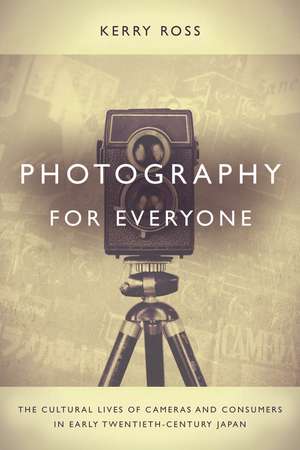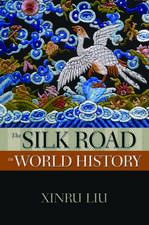Photography for Everyone: The Cultural Lives of Cameras and Consumers in Early Twentieth-Century Japan
Autor Kerry Rossen Limba Engleză Hardback – 23 iun 2015
| Toate formatele și edițiile | Preț | Express |
|---|---|---|
| Paperback (1) | 238.74 lei 6-8 săpt. | |
| Stanford University Press – 7 iun 2015 | 238.74 lei 6-8 săpt. | |
| Hardback (1) | 720.56 lei 6-8 săpt. | |
| Stanford University Press – 23 iun 2015 | 720.56 lei 6-8 săpt. |
Preț: 720.56 lei
Preț vechi: 935.79 lei
-23% Nou
137.90€ • 143.43$ • 113.84£
Carte tipărită la comandă
Livrare economică 15-29 aprilie
Specificații
ISBN-10: 0804794235
Pagini: 256
Dimensiuni: 156 x 235 x 20 mm
Greutate: 0.45 kg
Editura: Stanford University Press
Colecția Stanford University Press
Recenzii
Notă biografică
Cuprins
The Introduction familiarizes readers with the topics of the early twentieth-century photography market and amateur practices in Japan by situating the project historiographically in relation to three fields of scholarship: the history of photography; the history of retailing, consumption, and gender; and the history of middle-class culture.
Chapter 1 argues that the camera industry, alongside department stores, was at the forefront of a retail revolution focusing on male shoppers from the turn of the twentieth century. It offers a cultural history of retail practices in urban Japan, focusing on Konishi Roku (today's Konica Minolta), Japan's leading camera producer, whose headquarters and main shop were located in Nihonbashi, Tokyo.
Chapter 2 explores the camera market's segmentation into two distinctly gendered consumer markets, the casual photography market and the amateur photography market, and the innovative ways that the camera industry marketed its products to these very different consumer groups. In the drive for profit, the camera industry cultivated a casual photography market that promised photography was for everyone. In reality, sales in this market were based on an assumed female consumer, one who lacked photographic knowledge and simply consumed film by taking pictures willy-nilly. However, in fostering the amateur or hobby market, the camera industry focused on the male consumer, addressed as a knowledgeable man, or at least one seeking to become a knowledgeable man, invested in honing his skills in the art and technology of photography.
Chapter 3 investigates the role of how-to books in popularizing photography, both in terms of their explicit, stated purpose to teach photographers how to take and make photographs and the ways in which they suggested to readers the appropriate place of photography in their leisure time and in their homes.
Chapter 4 explores the role of camera clubs in the spread of photography, in particular, the ways in which participation offered members the opportunity to socialize with their peers and to congregate around a shared leisure-time activity. They also served as a venue to rehearse the democratic principles of participatory governance, such as voting for officers, opportunities denied to most in the public realm of politics.
Chapter 5 considers the actual pictures that amateurs took with an aim to understand popular aesthetics of the time. Amateur photography, not only as final product but also as a total process, provided hobbyists with an aesthetic language that matched their middle-class ideals: an active place in the world of consumerism befitting their newfound incomes and an absorbing activity that placed value on craftsmanship.
The Epilogue offers a concise account of the wartime restrictions on consumption and photographic practice and the rapid rebuilding of the photography industry immediately after the war.




















